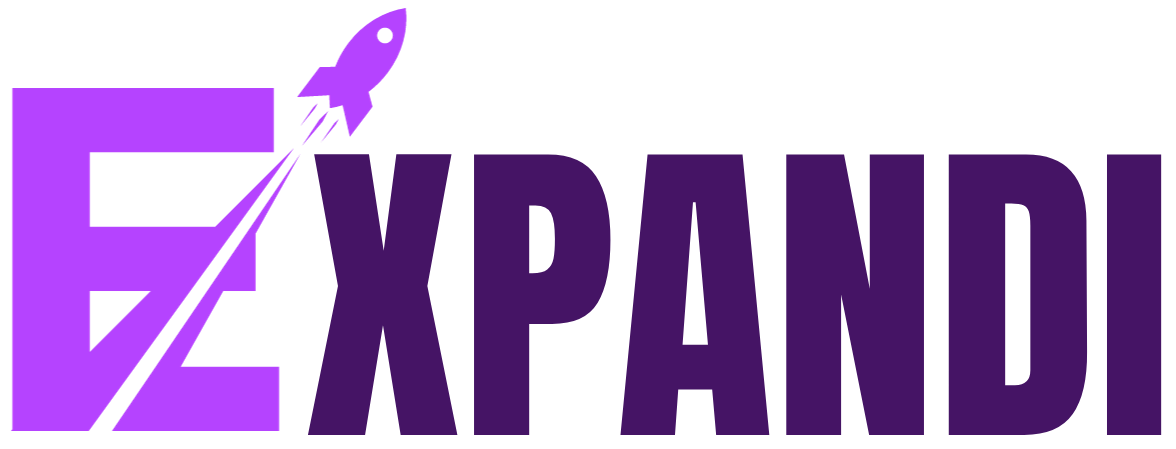Effective communication is crucial in sales, allowing salespeople to connect with buyers, understand their needs, and ultimately close deals. This article explores the importance of sales communication, highlighting the significance of listening, questioning, and presenting skills in the sales process. By mastering these communication techniques, sales professionals can enhance their ability to persuade customers, build relationships, and advance their careers.
In this article, expandi will brief you about sales communication, outline its significance, and explain how to do it more effectively by integrating with effective listening, questioning and presentation.
What does sales communication mean?
Sales communication is how salespeople utilize various methods to convince potential customers to purchase a product or service. It involves providing detailed information about the offering, actively listening to customer feedback and inquiries, and addressing concerns. Sales communication can be expressed verbally, through body language, or through different mediums such as presentations, sales pitches, conversations, emails, and phone calls. Effective sales communication facilitates understanding, builds rapport, and establishes a connection between the seller and the buyer. Furthermore, it plays a crucial role in finalizing sales, gaining recognition from employers, and advancing a salesperson’s career.
What is the importance of sales communication?
Sales communication plays a pivotal role in the sales process, as it empowers salespeople to gather and convey information in a manner that persuades prospects to engage in business. It transcends the mere presentation of product features and benefits, requiring a deep understanding of the buyer’s needs, preferences, and communication style. By mastering these skills, sales professionals can ensure that their messages resonate effectively with prospects.
The importance of sales communication can be summarized as follows:
- Value proposition: Effective communication enables salespeople to articulate a product or service’s value to customers clearly. Sales professionals enhance the likelihood of conversion by showcasing how the offering can improve their lives or address their specific needs.
- Pricing emphasis: Transparently communicating the price of a product or service builds trust with customers. Explaining the pricing structure helps customers feel confident about their purchase, reinforcing their belief that it represents a wise investment.
- Feature highlights: Complex products necessitate clear and understandable communication of their features. Utilizing visual aids, such as infographics, instructional materials, and charts, allows salespeople to convey the unique aspects and functionalities of the product effectively.
- Relationship development: Sales communication facilitates building strong relationships with customers, fostering loyalty and encouraging repeat business. These relationships can also create opportunities for future referrals and professional growth.
- Career advancement: Proficiency in sales communication impresses employers and opens doors for career progression. Sales professionals who excel in communication skills often find themselves well-positioned for management or leadership roles, where effective communication is a vital qualification.
Recognizing the significance of sales communication and continually refining communication skills empowers salespeople to improve success rates, establish enduring customer relationships, and advance in their careers. By honing their ability to engage prospects effectively, sales professionals can propel themselves towards greater achievements in the dynamic world of sales.
How to communicate more effectively?
Engaging in strategic planning and thorough research is important to enhance your sales communication skills. By incorporating the following practices, you can effectively develop your sales communication abilities:
- Conduct thorough research:
Become well-versed in your product or service by researching its features, benefits, and applications. This knowledge will enable you to explain it clearly and concisely to potential customers. Additionally, research your clients and their industry to understand their needs, challenges, and buying patterns, allowing you to tailor your communication to their specific context. - Develop a strategic approach:
Plan your communication strategy by creating a customer-focused message and determining the most effective mediums for reaching your audience. Consider the preferences of your customers and adapt your communication style accordingly. Choose the channels that align with your client’s communication preferences, whether through phone calls, emails, or face-to-face meetings. - Practice your strategy:
Practice delivering your sales pitch to refine your skills, build confidence, and internalize the information. Seek feedback from peers or friends who can simulate customer interactions and provide constructive input. Take notes during these practice sessions to identify areas for improvement and adjust your style accordingly. - Seek feedback:
Pay attention to customer responses during sales interactions and actively listen to their feedback. Take notes to evaluate your communication techniques and identify strengths and weaknesses. Additionally, consider offering surveys or seeking direct customer feedback to gain valuable insights into your sales process and how effectively you communicate. - Continuously refine your strategy:
Review and refine your communication strategy based on feedback, new information, and customer preferences. Adapt your approach to accommodate different customer personalities, styles, interests, and needs. By remaining adaptable and open to refinement, you can ensure that your communication is consistently effective and tailored to your audience.By following these steps and continuously improving your sales communication skills, you can become a more successful sales communicator, connecting with customers, effectively conveying the value of your product or service, and ultimately driving more sales.
Read More: Overcoming Objections: Techniques For Handling Common Sales Roadblocks
The Significance of Active Listening in Sales
Active listening is crucial for achieving sales success but must be considered and noticed. By actively listening, you can better understand your prospects’ needs and tailor your approach accordingly, increasing the chances of closing a sale.
Additionally, active listening helps build stronger relationships with prospects as they feel valued and understood. Active listening further enhances communication, enabling you to respond more effectively and build trust. By prioritising active listening, sales professionals can improve their communication skills and achieve greater success in closing deals.
To improve your active listening skills, consider implementing the following strategies:
- Practice concentration and focus: Prioritize concentration and focus before sales calls or meetings by eliminating distractions and giving your undivided attention to your prospects.
- Ask clarifying questions: Seek clarification when uncertain about something your prospect has shared. This demonstrates your active listening and genuine interest in their needs.
- Provide feedback: After your prospect has spoken, provide feedback to showcase your understanding and empathy towards their situation. This feedback reinforces the connection and trust.
- Be present: Stay fully present and engaged in the conversation, avoiding any distractions or wandering thoughts. Active listening requires being actively engaged in the discussion at hand.
- Practice active listening in all communication: Extend active listening beyond sales calls to all forms of communication. You can continuously improve your active listening skills by actively listening in personal and professional interactions.
How to Use Questioning Techniques?
Questioning techniques are powerful tools that can be utilized to achieve desired outcomes in various situations. By consciously employing the appropriate type of questions, you can effectively gather information, elicit responses and influence outcomes.
Here are some ways in which questioning techniques can be beneficial:
- Learning: Use open-ended, closed, and probing questions to gather knowledge and insights from others.
- Relationship building: Ask about people’s experiences, opinions, and interests to foster positive connections and maintain an open dialogue.
- Managing and coaching: Utilize rhetorical and leading questions to guide individuals toward reflection and commitment to specific actions.
- Avoiding misunderstandings: Probing questions help seek clarification and prevent assumptions, ensuring an accurate understanding of information.
- De-fusing heated situations: Employ funnel questions to redirect focus and allow angry individuals to express their concerns in detail, facilitating resolution.
- Persuasion: Instead of imposing your viewpoint, use open questions to invite others’ thoughts and opinions, fostering engagement and potential alignment.
By utilizing questioning techniques strategically, you can enhance communication, build rapport, resolve conflicts, and persuade others effectively. These skills can be valuable in various personal and professional contexts, contributing to successful interactions and outcomes.
What does Sales Presentation mean?
A sales presentation is a meeting or interaction between a salesperson or sales team and a company’s key stakeholders to persuade them to make a purchase. During the presentation, the salesperson showcases the capabilities, benefits, and features of their offering, aiming to align it with the prospective client’s needs. Effective sales presentations require careful planning and preparation.
Why are Sales Presentations important?
The importance of a good sales presentation lies in its ability to establish connections with potential customers, differentiate the offering from competitors, and ultimately close deals. It sets the tone for future interactions throughout the sales process and serves as a tool to convince prospects that the product or service being presented is the best solution for their needs.
An effective sales presentation should address the audience’s needs, challenges, and desires. It engages their imagination through compelling storytelling, a strong value proposition, and a clear call to action highlighting why the presenter’s offering is the optimal solution.
Core elements that contribute to an effective sales presentation:
- Research: Before presenting the solution, it is crucial to understand the prospect’s problem, challenges, and pain points. Thorough research allows the presenter to tailor the presentation to provide valuable and insightful solutions.
- Storytelling: Stories help prospects visualize the value of the offering. Selecting relevant stories based on individual needs and preferences enhances the impact of the presentation.
- Value Proposition: Communicating the product or service’s value to prospects is essential. A strong value proposition clearly states how the offering benefits the prospect, addressing the question, “What’s in it for me?”
- Proof: Providing proof of the solution’s effectiveness increases prospects’ confidence and willingness to move forward. This can include client testimonials, research data, and product comparisons against competitors.
- Call-to-Action: A compelling call to action at the end of the presentation guides prospects on the next steps they should take, whether it’s making a purchase, initiating internal processes, or starting a trial.
By incorporating these core elements into a sales presentation, salespeople can effectively engage prospects, address their needs, and increase the likelihood of closing deals.





